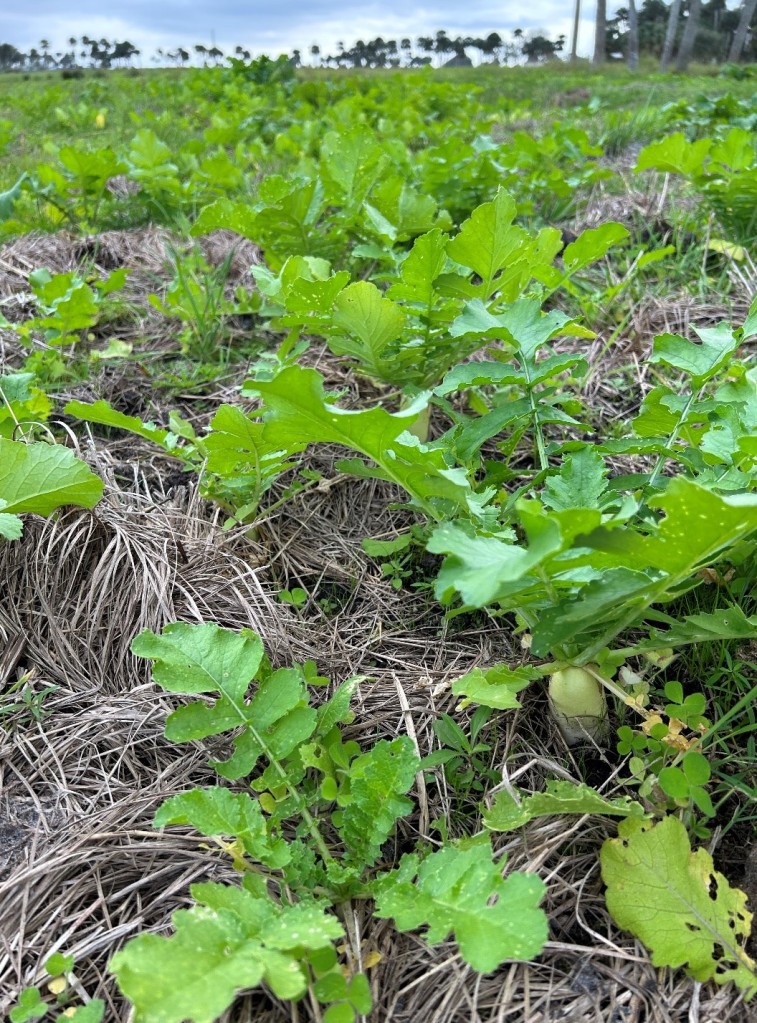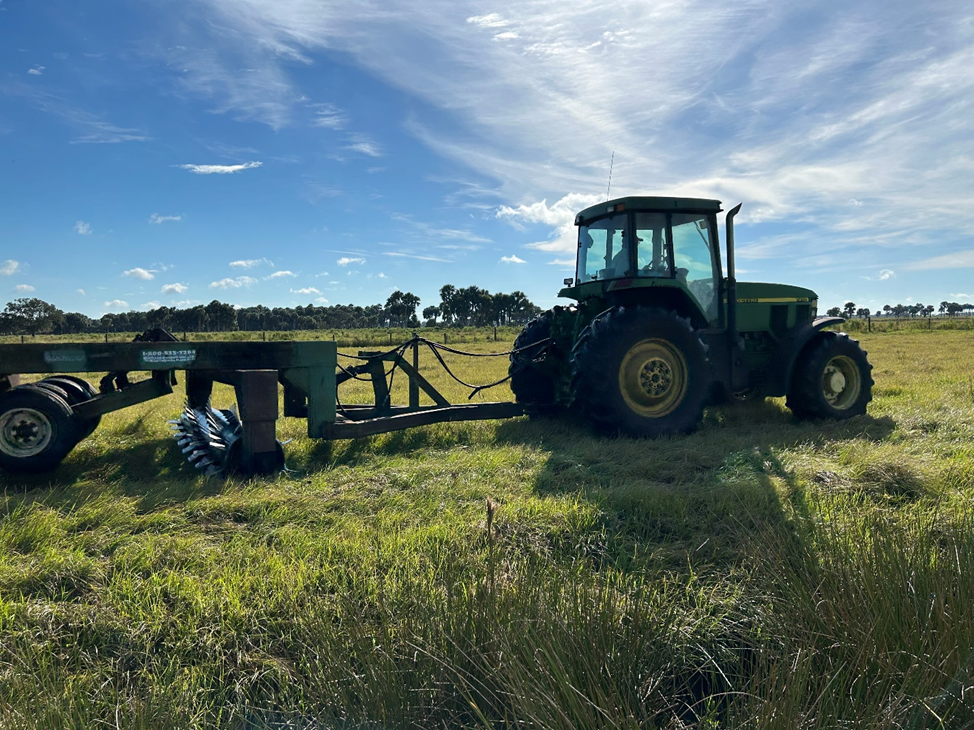
Author: Karen Rice-David
Buried underground in the fields of Florida ranchlands lies a tricky environmental issue: legacy soil Phosphorus. Phosphorus became a commonly used fertilizer in the 1950’s. It was used to grow high-protein clover fields and Bahia grass, a subtropical grass that grows well in heat and can handle wet and dry conditions, as forage for cattle. It was not until the 1980’s that farmers and scientists realized that Phosphorus fertilizer could harm water quality, and reduced Phosphorus applications were recommended. At Archbold’s Buck Island Ranch, very little to no Phosphorus fertilizer has been added to the soil since 1986, yet Phosphorus remains in the soil, thus considered legacy soil Phosphorus. Phosphorus can leach out of the soil, potentially polluting ditches, canals, and ultimately the Everglades watershed. Dr. Betsey Boughton, Archbold Agroecology Program Director said, “Even though Phosphorus loads from cattle pastures are low relative to other land uses (on a per-acre basis) the large acreage of ranches in the watershed makes them, cumulatively, a significant contributor to overall Phosphorus loads. Therefore, ranches have been a focus for improved Phosphorus control. At Buck Island Ranch, we are testing a variety of ways to mitigate soil legacy Phosphorus.”
Buck Island Ranch scientists have teamed up with The Nature Conservancy, with funding from the Florida Department of Agriculture and Consumer Services and the National Cattlemen’s Beef Association, to explore if interseeding cover crops into pastures may be an effective way to capture Phosphorus, improve soil health, and improve water quality in Florida pasturelands. Interseeding is when new plants are planted within an existing pasture. David Royal of The Nature Conservancy is one of the co-leaders of this three-year project and noted, “cover crops are nothing new, but most scientific papers are from the Midwest. This is an opportunity to get data from Florida, which is so different from any other state. Water quality is a major topic, and if we can find ways to improve and protect it, believe me the agricultural industry wants to do that. They know the land is their livelihood, so they want to be good stewards.”
Scientists at Buck Island Ranch planted two different seed mixes in pastures this winter, and will plant another seed mixture in the summer. As you walk through these cow pastures this spring, you can observe these seed mixes coming to life; daikon radishes, turnips, crimson clovers, rye, wheat, and oat are popping up amongst the Bahia grass. “Each of these cover crops have roles to play in improving the soil,” added Karen Rice-David, Archbold Agroecology Program Research Assistant. “The radishes and turnips have these large taproots, or tubers, that will decay and leave behind pockets in the soil. That will help air and water move down into the soil for other plants and microorganisms to use. Legumes like crimson clover and hairy vetch can add Nitrogen to the soil and reduce the need for fertilizer. Their roots are also good at finding nutrients in the soil and can capture those excess nutrients before it leaches out of the soils and into the waterways. Plus, we will have more flowering plants which may attract more pollinators, which in turn may attract more birds and other wildlife.”
David Royal believes there will be many benefits to our local ranchers if they start using these cover crops. “Water quality is our top priority. By absorbing excess nutrients and improving soil health, that will also improve forage growth. By doing variety mixes – that will extend the growing season, which benefits the grazing period during the winter months for the rancher. These plants will absorb nutrients, and as they breakdown at the end of the season they add nutrients and organic matter back to the soil. As a management program, the landowner can re-seed some species and cut seed to increase their acreage. It’s a win-win for all.”

